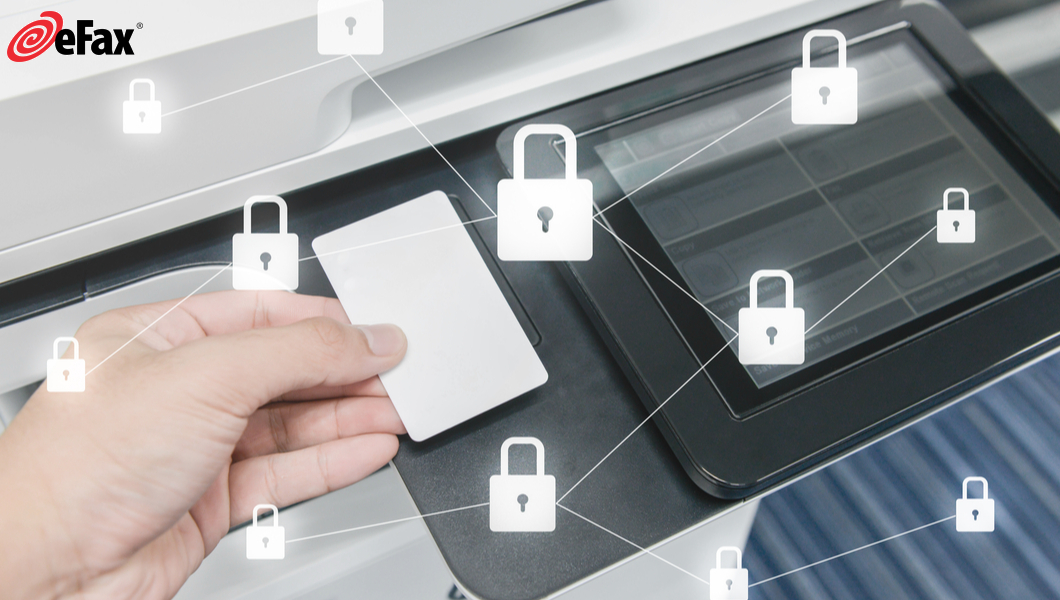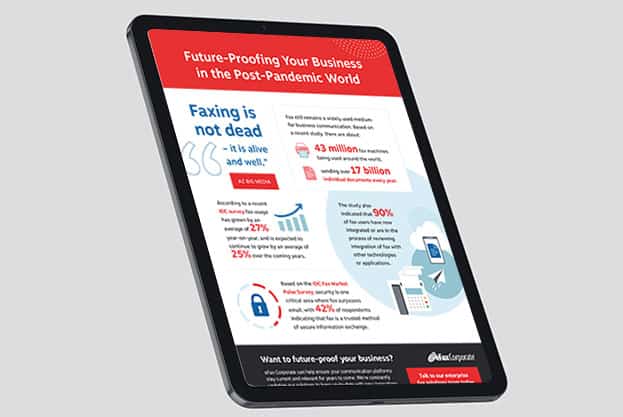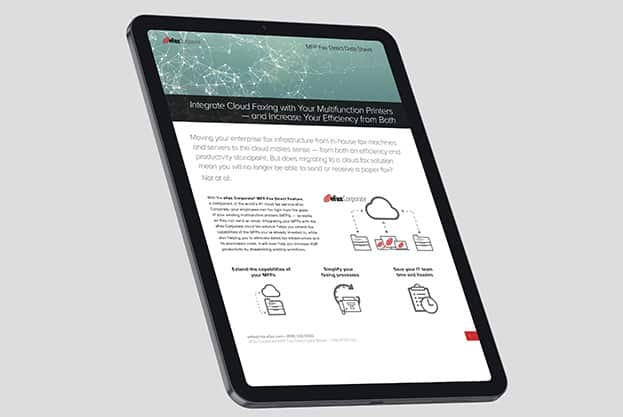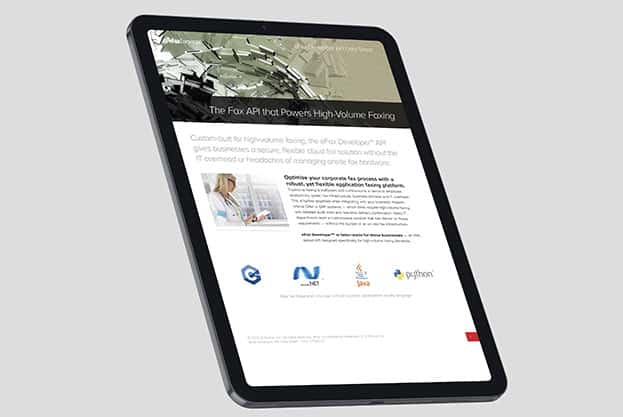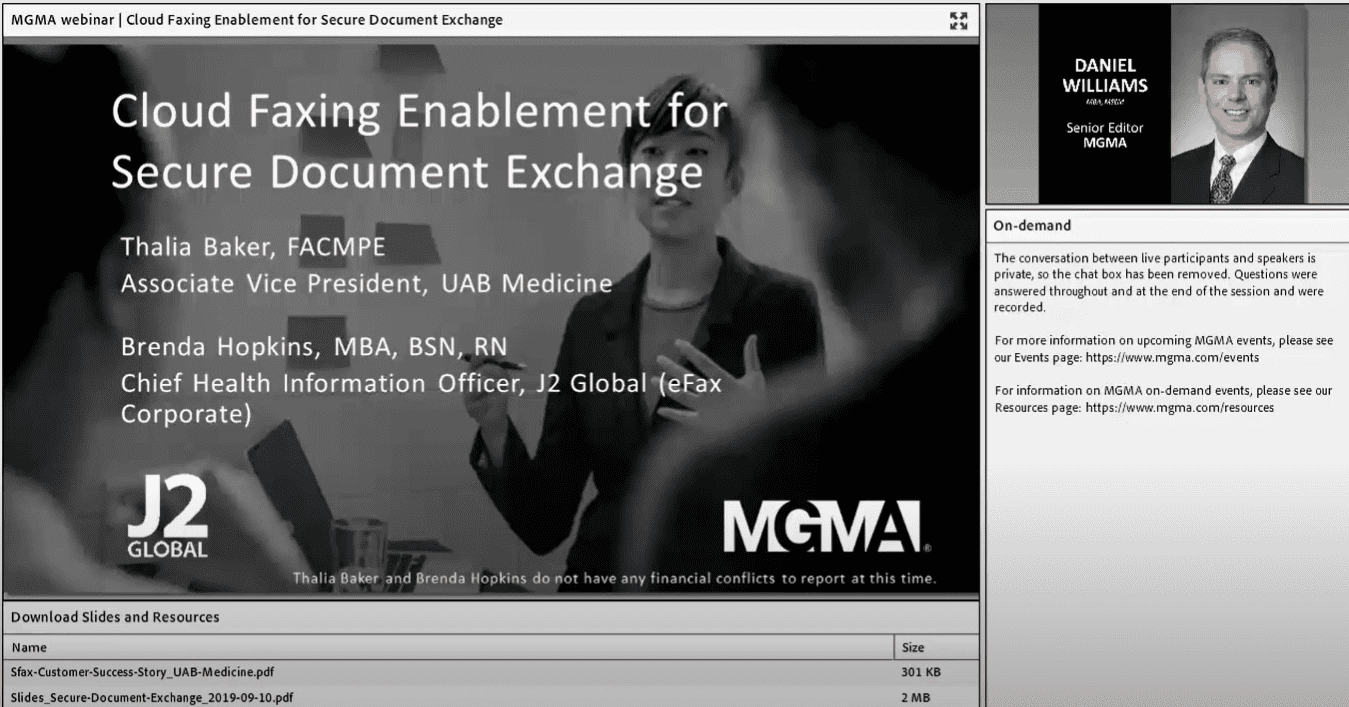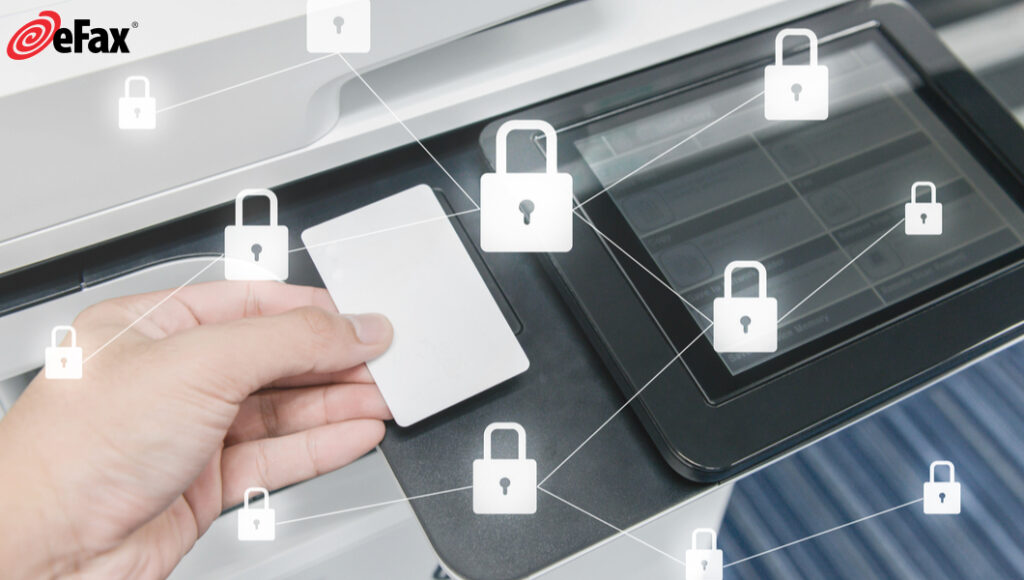
In 2016, a security researcher from Optiv identified a vulnerability called “CVE-2017-0199″ in Microsoft Word. That year, over 1.2 billion people used a Microsoft product — so a security vulnerability was a huge deal.
CVE-2017-0199 left a security hole in Word, and when a user downloaded a corrupted Word file, an attacker could install malware on their computer. Developers from Microsoft patched the hole in 2017. But in the meantime, cybercriminals stole millions from people’s bank accounts.
→ Send And Receive Faxes Online, Anytime, Anywhere. Start Your 30 Day eFax Trial Now
Don’t want this to happen to your business? We can help. In this article, we’ll teach you about the most significant cybersecurity threats facing businesses today and how online faxing can keep you and your customers safe.
Security Risks Corporations and Small Businesses Need To Pay Attention To
While cybersecurity attacks may seem like an abstract threat, they pose a very real threat to small, medium and large businesses. Even Google has at least 22 unforeseen cyber attacks annually.
Cyber attacks are expensive, too. According to the 2021 Data Breach Investigations Report from Verizon, most hacked organisations lose money. Specifically, 95% of hacked organisations lost $US69 – $US1,155,755 from ransomware attacks, $US148 – $1,594,648 from data breaches and $250 – 984,855 from email attacks.
If you want to keep your business secure, here are six security risks you need to understand.
Email Security Vulnerabilities
Though email is an excellent tool for communicating with your team, it’s the perfect avenue for hackers to exploit.
You can understand why email is so dangerous by looking at a 2018 hack on several US state and local governments. In this hacking attempt, hackers mailed victims a mysterious looking CD hoping that they would open it out of curiosity. Naturally, the CD contained malware that started to attack once someone inserted it into a device.
Email hackers use the same tactics. They send emails promising gifts, money, prizes and other things to unsuspecting victims. People’s natural curiosity causes them to open the email and download malware, open a corrupted link or respond to the hacker.
You can protect your organisation against email security vulnerabilities by training your staff to spot threats, using secure messaging channels (like Instant Messaging apps) and using data-sharing tools that reduce people’s reliance on email.
Phishing
Phishing is one of the most well-known but powerful security risks. Phishing is a social engineering technique hackers use to trick you into handing over login information, bank data and other credentials.
There is another offshoot of phishing you need to understand — spoofing. Spoofing occurs when hackers disguise their identities to trick you into handing over information. For example, they may impersonate a member of your IT department or bank.
In 2019, 38% of attacks on companies in the US used phishing. You only need to look at a study from PhishMe to understand why. PhishMe sent over 8 million phishing emails to 3.5 million people and found that 87% of recipients opened the phishing email the day they received it.
People opened a wide range of phishing emails, too. For example, 36% of recipients opened an email that promised a file from the scanner, 34% of recipients opened an email that said someone had gained unauthorised access to one of their accounts, and 28% opened a package delivery email.
The best way to protect your organisation from phishing is to teach staff to identify phishing and report it.
Malicious Files
Malware is another growing threat facing organisations worldwide. Malware is a type of software that infects your computer and damages or destroys it. Hackers use malware for many reasons, including to destroy your property, steal your data or leak confidential files.
In 2020, people discovered over 677 million new pieces of malware. Malware numbers are also growing quickly, as they have grown 2317% from 28 million in 2010.
Though there are endless ways to send malware, many hackers trick you into downloading malware through a corrupt link or document. Naturally, you can prevent malware attacks by switching to online faxing for document sharing, using antivirus software and limiting what people can download on work computers.
→ Send And Receive Faxes Online, Anytime, Anywhere. Start Your 30 Day eFax Trial Now
Ransomware
Ransomware is exactly what it sounds like: malware that takes your data hostage until you pay a ransom fee. Like malware, people often get ransomware by unknowingly downloading a file that contains it.
Ransomware is increasingly prevalent in the Business to Business (B2B) sector. In 2021, hackers conducted over 5.6 billion malware attacks worldwide, and 68.5% of organisations have fallen victim to ransomware attacks.
According to Statistica, Managed Service Providers (MSPs) say that 54% of the ransomware infections they’ve observed happened because people downloaded content from phishing or spam emails. Thus, you can prevent ransomware attacks by switching to online faxing, monitoring staff downloads and teaching staff about ransomware.
Database Exposure
A database exposure (or “data breach”) occurs when someone without authorisation accesses your data. Hackers often target an organisation’s data to sell it for profit, learn trade secrets, make it public or hold it for ransom. Data breaches are pretty common, as according to the Ponemon Institute, 48% of organisations have had a data breach over the past two years.
You can prevent a data breach in your organisation by limiting people’s access to confidential data (especially banking data), using secure data management software and using cyber safe passwords.
Web Application Vulnerabilities
Web application vulnerabilities occur when your web applications (including websites) have security holes that hackers can compromise.
One of the most common ways hackers find and exploit web security vulnerabilities is through fuzzing (or “fuzz testing”). Fuzzing uses software to enter data into input boxes in your application until the hacker finds a weakness. Then, they breach the whole application.
According to Verizon’s report, 20% of cyber attacks focus on web applications. Additionally, hackers violate roughly 127,000 websites daily.
You can protect your organisation from web application hacking by establishing private channels for client communication and document sharing (instead of accepting these via public web applications) and removing bugs and errors from your application’s code.
What Makes Online Faxing Secure
Online faxing is a secure document sharing tool that helps you improve your cyber security by:
- Encrypting your data, as online faxing encrypts your documents with 256-bit Transport Layer Security (TLS) (so only you and the recipient can read its contents)
- Sending your documents over Tier-3 secure servers, which helps prevent hackers from stealing your documents in transit
- Storing your data in cloud-based storage, which makes it difficult for hackers who breach your computers or mobile phones to steal documents
- Giving you a secure document-sharing tool so that you can reduce your reliance on email
- Storing your favourite fax numbers in an address book, making it easy for you to verify you are sending a fax to the correct recipient
- Allowing you to control who accesses your faxing system, reducing the likelihood of an outsider stealing confidential data
Email vs Online Faxing
Online faxing is more cyber secure than email, as it’s easier to breach your email system, email is more susceptible to phishing, and malware is more challenging to send via online fax.
There are also other advantages to online faxing over email, as:
- Most email providers limit file size to 20 MB or less, whereas online faxing can transmit documents up to 3 GB
- You can’t email many file types due to their size, but you can send them with online faxing. This includes MOV and MP3 files.
- Documents sent over fax may be legally binding (depending on state laws)
Online faxing also offers all the functionality of email through email faxing — so you can have the best of both technologies.
Online Fax Security Case Studies
One of the best ways to see the cybersecurity benefits of online faxing in action is to look at case studies from eFax customers. Here are two.
Case Study #1. AXA
AXA Assistance helps companies process medical assistance and accident claims. Currently, the company receives around 100,000 pages annually. As these pages contain clients’ medical documents and personal data, AXA uses online faxing to protect them during transmission.
Case Study #2. National Insurance Company
A Fortune 500 National Insurance Company uses online faxing to collect medical documents for insurance claims. As these documents have Personally Identifiable Information (PII), the company must adhere to the Healthcare Portability and Accountability Act (HIPAA). Using online faxing with eFax ensures the company is compliant and helps the company reduce the number of staff who see each document (as eFax files them automatically).
What Industries Benefit From Online Faxing The Most?
If your business sends or receives faxes regularly, you will benefit from online faxing. However, organisations in these three industries will benefit from online faxing the most:
Healthcare
Cyber security is a serious concern for healthcare businesses, as they collect, store and share highly confidential client data. Naturally, cyber-attacks are costly for healthcare organisations, as a successful one costs roughly $US6.5 million. That’s nearly two-thirds higher than the cost of the average attack.
Financial Services
Organisations in the financial services industry (including banks, insurance companies, investment funds and accountants) generate high volumes of financial paperwork. As a cybercriminal could use this paperwork to steal money from clients, organisations in this sector need to transfer and store documents securely.
Legal Firms
As legal firms need to transmit lengthy documents quickly, many firms use email and traditional fax machines. Unfortunately, these document sharing tools aren’t as cyber secure or fast as online faxing, and they don’t store faxes automatically. Thus, law firms can save time and protect themselves with online faxing.
eFax: Your Secure Online Faxing Partner
Cyber security is crucial for small, medium and large businesses. Keep your business safe and partner with eFax.
eFax is a leading fax provider that supports over 11 million customers worldwide. eFax’s robust faxing system is easy to use and full of great features that make faxing smart. Those features include:
- An iOS and Android app
- Email faxing
- Digital signatures
- Large File Transfer up to 3 GB
- Unlimited cloud-based storage
- A PDF converter to turn fax files into PDFs
- Fax templates
- Fax preview
- Multiple-recipient faxing
- An integration app for Microsoft Word
Start a free 30-day trial to see how eFax works for your business. Your trial includes free access to eFax, up to 400 free faxes and a free fax number.
Start your free trial by calling 1800 283 361 or clicking here.

